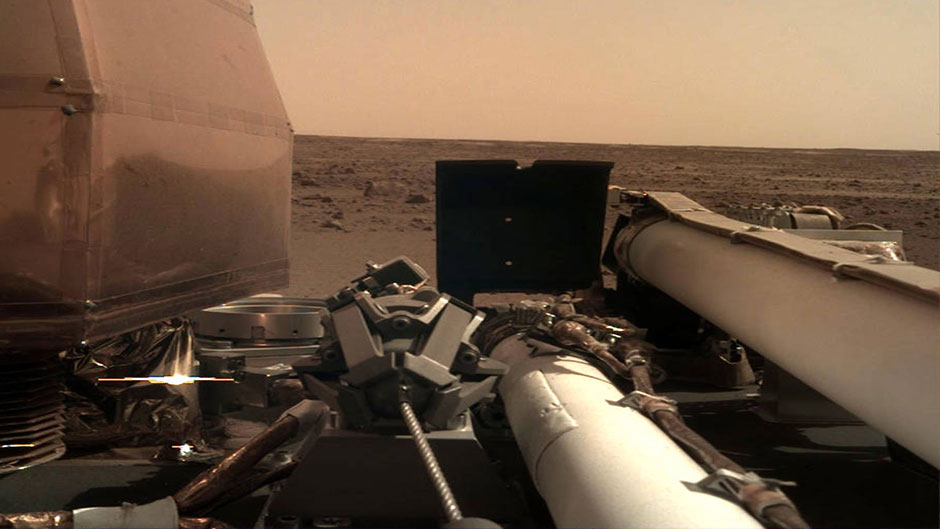Cheers and applause erupted inside NASA’s mission control center at the Jet Propulsion Laboratory in Pasadena, California., the afternoon of Nov. 26. The tension in the air quickly turned to jubilation after dozens of engineers inside mission control heard the simple words from a flight controller, “touchdown confirmed.” 
The monumental moment everyone celebrated was the landing of the InSight spacecraft, following a nail-biting supersonic descent through the red skies of Mars. The spacecraft travelled 100 million miles through space for six months before arriving at Mars. The billion-dollar mission will be NASA’s eighth landing on the planet.
InSight (Interior Exploration using Seismic Investigations, Geodesy, and Heat Transport), is a NASA Discovery Program mission. The lander is there to study the deep interior of Mars. News@TheU caught up with Victoria Coverstone, professor and chair for mechanical and aerospace engineering at the University of Miami College of Engineering, to learn more about InSight’s research plans.
What is the goal for the “InSight spacecraft”
The InSight mission will collect data that is meant to assist us in understanding how Earth and Mars evolved. One instrument will measure the seismic waves on Mars (Marsquakes), another instrument will drill into the surface to determine the temperature variations, and another will use radio waves to study the planet's core with the hopes to better understand how the interior of Mars developed and if its core is still molten.
How is this mission different from other past Mars missions?
Since 1965, NASA has been exploring Mars, but this is the first mission to explore the inside of Mars in detail.
What is the technology behind this mission? How are researchers able to control the robot from earth?
NASA is controlling the rover remotely from Earth. Therefore, a level of autonomy is required due to the time delay between when commands are sent and received, and between when Mars sensors collect data and it is received back on Earth. One recent technology that was first demonstrated on this mission is the use of two small satellites called Cubesats that were used to communicate information between the lander and Earth during the entry into the Mars atmosphere.
In what ways will this mission help determine how Earth and other planets evolved?
Scientist will compare the data from Mars' core and seismic activity to that of Earth to better understand what makes Earth different so that inhabitable exoplanets (planets around other stars) might be identified based on these differences.
Why is this mission such a big deal for space exploration?
The information about the subsurface of Mars will be used for colonization. Does Mars have a permafrost depth where ice water could be mined? Is there subsurface liquid water? We know very little about what exists under the surface of Mars and undoubtedly we will identify resources that will be useful for future human colonization.

